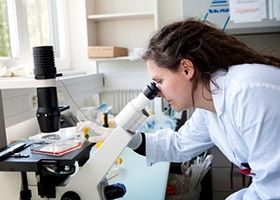Medical expert of the article
New publications
Causes and pathogenesis of persistent galactorrhea-amenorrhea syndrome
Last reviewed: 04.07.2025

All iLive content is medically reviewed or fact checked to ensure as much factual accuracy as possible.
We have strict sourcing guidelines and only link to reputable media sites, academic research institutions and, whenever possible, medically peer reviewed studies. Note that the numbers in parentheses ([1], [2], etc.) are clickable links to these studies.
If you feel that any of our content is inaccurate, out-of-date, or otherwise questionable, please select it and press Ctrl + Enter.

The genesis of pathological hyperprolactinemia is heterogeneous. It is assumed that the syndrome of persistent galactorrhea-amenorrhea, caused by primary damage to the hypothalamic-pituitary system, is based on a violation of the tonic dopaminergic inhibitory control of prolactin secretion.
The concept of primary hypothalamic genesis suggests that a decrease or absence of the inhibitory effect of the hypothalamus on prolactin secretion leads first to hyperplasia of prolactotrophs and then to the formation of pituitary prolactinomas. The possibility of persistence of hyperplasia or microprolactinoma that does not transform into a subsequent stage of the disease (i.e., into macroprolactinoma - a tumor extending beyond the sella turcica) is allowed. Currently, the dominant hypothesis is a primary pituitary organic lesion (adenoma), not detected at early stages by conventional methods. This adenoma is monoclonal and is the result of a spontaneous or induced mutation; releasing hormones, numerous growth factors (transforming growth factor-alpha, fibroblast growth factor, etc.) and imbalance between regulatory influences can act as promoters of tumor growth. In this case, excess prolactin leads to the production of excess dopamine by neurons of the tuberoinfundibular system.
Since persistent galactorrhea-amenorrhea syndrome often develops against the background of chronic intracranial hypertension and many patients have signs of endocraniosis, the role of neuroinfection or cranial trauma, including in the perinatal period, as a cause of the inferiority of the hypothalamic structures cannot be excluded.
The role of emotional factors in the formation of persistent galactorrhea-amenorrhea syndrome is being studied. It is possible that negative emotions, especially during puberty, can cause stress hyperprolactinemia and anovulation.
Although isolated cases of galactorrhea developing in sisters have been described, there is no convincing evidence to support the existence of a hereditary predisposition,
In addition to persistent galactorrhea-amenorrhea syndrome as an independent disease, hyperprolactinemia may develop secondarily in various endocrine and non-endocrine diseases, and hypogonadism in this case is of a mixed nature and is caused not only by hyperprolactinemia, but also by a concomitant disease. Organic lesions of the hypothalamus (xanthomatosis, sarcoidosis, histiocytosis X, hormonally inactive tumors, etc.) may be the cause of impaired synthesis or release of dopamine from tuberoinfundibular neurons. Any process that disrupts dopamine transport along axons to portal vessels or interrupts its transport along capillaries leads to hyperprolactinemia. Compression of the pituitary stalk by a tumor, an inflammatory process in this area, its transection, etc. are etiologic factors in the development of hyperprolactinemia.
Some patients have an empty sella syndrome or a cyst in its area. The coexistence of the empty sella syndrome and pituitary microadenoma is possible.
Secondary symptomatic forms of hyperprolactinemia are observed in conditions accompanied by excessive production of sex steroids (Stein-Leventhal syndrome, congenital dysfunction of the adrenal cortex), primary hypothyroidism, taking various medications, reflex influences (the presence of an intrauterine contraceptive, burns and chest injuries), chronic renal and hepatic insufficiency. Until recently, it was assumed that prolactin is synthesized exclusively in the pituitary gland. However, immunohistochemical research methods have revealed the presence of prolactin in the tissues of malignant tumors, intestinal mucosa, endometrium, decidua, granulosa cells, proximal renal tubules, prostate, and adrenal glands. Presumably, extrapituitary prolactin can act as a cytokine, and its paracrine and autocrine actions are no less important for ensuring the vital functions of the organism than the well-studied endocrine effects.
It has been established that decidual cells of the endometrium produce prolactin, which is identical to the pituitary in its chemical, immunological and biological properties. Such local synthesis of prolactin is determined from the initiation of the decidualization process, increases after implantation of the fertilized egg, reaches a peak by 20-25 weeks of pregnancy and decreases immediately before labor. The main stimulating factor of decidual secretion is progesterone, the classic regulators of pituitary prolactin - dopamine, VIP, thyroliberin - do not have a real effect in this case.
Almost all molecular forms of prolactin are found in amniotic fluid, the source of its synthesis is decidual tissue. Hypothetically, decidual prolactin prevents blastocyst rejection during implantation, suppresses uterine contractility during pregnancy, promotes the development of the immune system and the formation of surfactant in the fetus, and participates in osmoregulation.
The significance of prolactin production by myometrial cells remains unclear. Of particular interest is the fact that progesterone has an inhibitory effect on the prolactin-secreting activity of muscle layer cells.
Prolactin is found in the breast milk of humans and a number of mammals. The accumulation of the hormone in the secretion of the mammary glands is due to both its transport from the capillaries surrounding the alveolar cells and local synthesis. At present, no convincing correlation has been found between the level of circulating prolactin and the incidence of breast cancer, but the presence of local production of the hormone does not allow us to completely exclude its role in the development or, conversely, the inhibition of the development of these tumors.
The presence of prolactin is determined in the cerebrospinal fluid even after hypophysectomy, which indicates the possibility of prolactin production by neurons of the brain. It is assumed that in the brain the hormone can perform many functions, including ensuring the constancy of the composition of the cerebrospinal fluid, mitogenic effect on astrocytes, control over the production of various releasing and inhibitory factors, regulation of the change in sleep and wakefulness cycles, modification of eating behavior.
Prolactin is produced by the skin and associated exocrine glands; connective tissue fibroblasts are a potential source of local synthesis. In this case, researchers believe that prolactin can regulate the salt concentration in sweat and tears, stimulate the proliferation of epithelial cells, and enhance hair growth.
It has been established that human thymocytes and lymphocytes synthesize and secrete prolactin. Almost all immunocompetent cells express prolactin receptors. Hyperprolactinemia often accompanies such autoimmune diseases as systemic lupus erythematosus, rheumatoid arthritis, autoimmune thyroiditis, diffuse toxic goiter, multiple sclerosis. The hormone level also exceeds the norm in most patients with acute myeloleukemia. These data suggest that prolactin plays the role of an immunomodulator.
Hyperprolactinemia, probably of extrapituitary origin, is often present in a number of oncological diseases, including cancer of the rectum, tongue, cervix, and lungs.
Chronic hyperprolactinemia disrupts the cyclic release of gonadotropins, reduces the frequency and amplitude of LH secretion "peaks", inhibits the action of gonadotropins on the sex glands, which leads to the formation of hypogonadism syndrome. Galactorrhea is a frequent, but not obligatory symptom.
Pathological anatomy. Despite numerous data indicating the widespread occurrence of microadenomas in the radiologically intact or minimal, ambiguously interpretable, changes in the sella turcica, a number of researchers admit the possibility of the existence of so-called idiopathic, functional forms of hyperprolactinemia caused by prolactotroph hyperplasia due to hypothalamic stimulation. Prolactotroph hyperplasia without the formation of microadenomas was often observed in the removed adenohypophysis of patients with persistent galactorrhea-amenorrhea syndrome. There are known cases of postpartum lymphocytic infiltration of the adenohypophysis, leading to the development of persistent galactorrhea-amenorrhea syndrome. Probably, various variants of the development of this syndrome are possible in terms of the mechanism.
 According to light microscopy, most prolactinomas consist of uniform oval or polygonal cells with a large oval nucleus and a convex nucleolus. With conventional staining methods, including hematoxylin and eosin, prolactinomas often appear chromophobic. Immunohistochemical examination reveals a positive reaction for the presence of prolactin. In some cases, tumor cells are positive for STH, ACTH, and LH antisera (with normal levels of these hormones in the blood serum). Based on electron microscopic studies, two subtypes of prolactinomas are distinguished: the most characteristic are rarely granular with a granule diameter of 100 to 300 nm and densely granular, containing granules up to 600 nm in size. The endoplasmic reticulum and Golgi complex are well developed. The presence of calcium inclusions - microcalciferites - often helps to clarify the diagnosis, since these components are extremely rare in other types of adenomas.
According to light microscopy, most prolactinomas consist of uniform oval or polygonal cells with a large oval nucleus and a convex nucleolus. With conventional staining methods, including hematoxylin and eosin, prolactinomas often appear chromophobic. Immunohistochemical examination reveals a positive reaction for the presence of prolactin. In some cases, tumor cells are positive for STH, ACTH, and LH antisera (with normal levels of these hormones in the blood serum). Based on electron microscopic studies, two subtypes of prolactinomas are distinguished: the most characteristic are rarely granular with a granule diameter of 100 to 300 nm and densely granular, containing granules up to 600 nm in size. The endoplasmic reticulum and Golgi complex are well developed. The presence of calcium inclusions - microcalciferites - often helps to clarify the diagnosis, since these components are extremely rare in other types of adenomas.
True chromophobe adenomas (hormonally inactive pituitary tumors) may be accompanied by persistent galactorrhea-amenorrhea syndrome due to hypersecretion of prolactin by prolactotrophs surrounding the adenoma. Sometimes hyperprolactinemia is observed in hypothalamic and pituitary diseases, in particular in acromegaly, Itsenko-Cushing disease. In this case, either adenomas consisting of two types of cells or pluripotent adenomas capable of secreting several hormones are detected. Less often, the coexistence of two or more adenomas from different cell types is detected, or the source of excess secretion of prolactin is the tissue surrounding the adenohypophysis.


 [
[